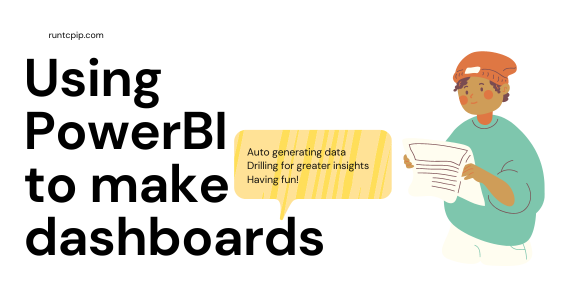While this is the free tier, I cannot share or collaborate with others, nor can I publish content to other people's workspaces, but they will not stop me from screenshooting and recording these self-taught adventures,so!
I'm doing this because I idly searched "Mattel careers" and "Information Technology", and seeing a bulletpoint saying the following:
- Analytical and reporting skills such as creating dashboards and establishing KPIs such as experience with PowerBI, Cognos, Tableau, and Google Data Lake/AWS is preferred
And thought "Well, I've used Tableau, and I've heard about PowerBI, even if its in-demandness is questionable, so how similar is it? And can I write about it?"
First, PowerBI (PIB) does have a downloadable, local version, but apparently Windows-only. I could download the .exe but I couldn't run it / drag it to applications on my MacBook.
Not a problem, we'll use the online SaaS version, and a dataset found here, at the AWS Data Exchange.
Like stocks, but not.
I first downloaded a dataset about Carvana sales from a group called Saturn Data, and you can find it here as a .CSV.
The web app somehow read my download information and uploaded it to PBI. Before I made the dashboard, I played around with making reports.
I used the auto-generate feature to create data - not a dashboard - of the Carvana sales in a certain year. The commit note says it was committed in August of 2022, so probably in the 2020 - 2021 range.
Here's a quick walkthrough video.
I now gathered some data about airlines from A Skytrax Dataset here on GitHub and used the Drill Down feature.
It's very interesting to see how deep the data-hole goes. I can check out how many people bought food on a trip from Auckland to Los Angeles, and the corresponding pie chart even tells me which month (July) it happened in.
And here is some more adjustments on filtering using the New York City Real Estate Sales Data -- Note the change of visuals.
Let's adjust the visualizations to be a little friendlier to read.
I created a dashboard with a scorecard -- A built in feature that we use to track metrics. Mine says "How can we increase Jeeps sales in the next quarter?" -- I even attached the starting point of 88.01k Jeeps sold to the actual data set -- It could update in real time!
Overall, I don't find PowerBi to be as intuitive as Tableau, though it is a lot easier to get started with, and there's a web option, so you don't have to download PowerBi. The desktop version can attach to Azure Databricks, to pull your stored data into the program to contort and shape into something usable for your business.
If any of this helps you, give this post a share.



Comments
Post a Comment